Barsoom Busted? The Foibles of Following Fiction with Film
[Spoiler Non-Alert! I imagine based on the reported box-office returns that most everybody has already seen both John Carter and Hunger Games, but for those of you who haven’t yet, rest assured that I won’t be giving away anything here which will lessen your experience of either film. I will be making some drive-by mentions of differences between the novels and books, however, so if you’ve read the novels it may subtly give some of the game away. But then if you’ve read the books I’m guessing you’re probably not the sort of person who’s worried about spoilers, anyway.]
Readers of Redstone since its inception will know how long and how much I have been looking forward to Disney’s John Carter film (see RSF#1). But when in early March I picked up a copy of Disney’s John Carter novel at the local bookstore, I immediately put it back down again, and decided I wasn’t looking forward to the film after all. My negative reaction was based purely on what I saw printed on the front cover.
Go ahead, feel free to tell me you can’t judge a book by its cover. I agree. But you can judge a movie by its novelization’s cover.
The subtitle, after all, is The Movie Novelization. Clearly this meant it’s not the novel on which the movie was theoretically based (which I had hoped would have been written by Edgar Rice Burroughs), but the other way around. As if that weren’t enough, there is no author listed on the cover, just the (no pun intended) possessive “Disney’s” above the title. Not Walt Disney, of course, since he’s dead. Just Disney (though a perusal of the fine print on the title page reveals Disney’s last name: “Enterprises”). A little digging later discovered that the author of this novelization is, in fact, graphic novel writer Stuart Moore. I couldn’t tell that from the cover and title page (or else I might have not put the book down so fast).
But the clincher was the banner across the top of the front cover, which read “Also includes: A Princess of Mars by Edgar Rice Burroughs.” Now why in the world would they need to include a copy of A Princess of Mars along with the novelization if this was based on A Princess of Mars? (Better question – why novelize it at all, since it’s already a novel?) I assumed it must be because the novelized movie (and the movie itself) is so far removed from the seminal John Carter novel (celebrating its 100th anniversary this year) that Burroughs would roll over in his grave (and his estate would roll over Disney) if they didn’t clearly indicate that the two stories are definitely not the same. (That and maybe the fact that A Princess of Mars is in the public domain so Disney didn’t have to pay anyone royalties to bundle it with their version.)
[Shameless-less Plug: I’m actually glad Disney included Burroughs’s original story, since it’s a favorite of mine and now maybe more people will read it who might not have otherwise, but those of you who don’t want to have to buy the Disney version to get it can find it (and many other public domain works, including most of Burroughs’s other John Carter books) at Project Gutenberg.]
If you haven’t figured it out by now (or if you haven’t read my first RSF column), I’ll go ahead and admit to a bias: I’m a purist. I like my movie versions of novels to stick fairly closely to the original book. Going into the theater on opening weekend, I was expecting to be disappointed. Coming out of the theater, I was disappointed. But that may have been due to the fact that I left with a headache after seeing it in double-vision because the 3D projectors in my local theater weren’t calibrated correctly. (When I complained, the theater manager told me I should pay double since I technically got to see two different films at once. He gave me double my money back after I threatened to make him see double. True story.) While I was disappointed that John Carter didn’t follow Burroughs very closely, at the same time I wasn’t disappointed because the film did follow Burroughs closely. (Hmmmm. Maybe I did see two different films, after all.) Before I untangle that paradoxical statement, let me first discuss another recent movie, one which followed its inspirational novel extremely closely, The Hunger Games.
Suzanne Collins’s (2008) The Hunger Games is a thrilling science-fiction novel for adults and young-adults alike (but not for the very young – it gets graphically violent). The first in a trilogy (I’m reading the equally gripping second book in the series right now), it’s similar in concept (but not in finished product) to Japanese cult sci-fi author Koushun Takami’s (1999) novel Battle Royale, in which the government in a dystopian society randomly selects youths to battle each other to the death. Takami’s novel is an extended homage to the chapter of the same name from Ralph Ellison’s 1952 Invisible Man, itself an ironic allusion to H.G. Wells’s 1897 sci-fi classic Invisible Man (see review in RSF#5).
Last month’s blockbuster cinematization of The Hunger Games certainly does Collins’s novel justice by my own book-biased criteria. I know there will be some people complaining that their favorite scene got left out (e.g., no baker visit after the Reaping), or changed (how Katniss got her mockingjay pin), but those minor changes didn’t really affect the storyline or characterization all that much, so I’m not bothered by them (except that, despite the snazzy special effects, the ‘mutts’ were not nearly as scary as in the book, since they went on four legs and their disturbing origin was ignored). But the silliest complaints I’ve heard (“silly” isn’t really the word I’d use, but I’m trying to keep it clean here) are the ones whining about characters being miscast. I’m sure by now everyone has heard something about the flak regarding some (apparently not just a few) misguided people tweeting their indignation that Thresh and Rue are played by African-Americans (see Haque). Read the book, people! They’re both described as having dark brown skin (cf. p.98 and p.126)! Similar (unfounded) complaints have been made about Cinna. [Note that Cinna himself is further evidence of Shakespeare’s influence on sci-fi (cf. RSF#13). Have you noticed how many of the characters from the Capitol have names right out of Julius Caesar? Cinna, Caesar, Portia, Flavius, Octavia.]
And then there are the people complaining that Katniss is too fat. (see Fleming). Really? ‘Fat’ is not the word I’d use for 21-year-old actress Jennifer Lawrence. (Maybe ‘phat,’ except then I might come across as just as focused on physical appearance as those who call her ‘big-boned’. And such a term would also reveal my age.) Okay, so maybe Katniss doesn’t look as gaunt as a girl from District 12 should look, but remember, her family gets plenty of protein from the animals she hunts, owns a milk-goat, and trades squirrels with a baker for fresh bread, so I can suspend my disbelief for the duration of the film. Lawrence thankfully isn’t the method actress Robert DeNiro or Dustin Hoffman is, or she might have starved herself to fill the role. We need fewer heroin-chic anorexic role-models in Hollywood, anyway.
But as far as following the book’s plot goes, the film is spot on. No major deviations. Not so with John Carter.
I know back in RSF#1 I dissed Asylum’s 2009 low-budget version of Princess of Mars (they miscast Dejah Thoris as blonde, and the green men had artichoke heads and only two arms), but as far as sticking to Burrough’s plot goes, Asylum actually did a much better job than Disney. John Carter did actually include a number of key scenes from the novel, only in the wrong order, with different results, and often with different characters. Disney left out the whole atmosphere plant crisis, used the question of Sola’s parentage in a completely different way (and less suspenseful) way, introduced the therns a book too early and in a very different (but perhaps more menacing) role, and added an unnecessary voyage down the sacred River Iss (though perhaps this was just to set things up for the next movie, John Carter: Gods of Mars).
John Carter even lifted a cheap gimmick directly from Asylum (who in turn lifted it from Douglas Adams). Rather than having to deal with Carter learning the Martian language over an extended period of telepathic study as he did in the book, in John Carter he was able to miraculously gain Martian speech merely by drinking a concoction called the “Voice of Mars”. In Asylum’s version it was a centipede-like worm (probably closely related to the babel fish) that he had to eat.
But my big worry (which I voiced two years ago) was that the scientific and social discussions which tend to be my favorite part of sci-fi novels would be left out of an action-packed, special-effects-laden film. Perhaps I shouldn’t even hope. Movies are, after all, a different medium, and one should expect something to get lost in translation.
What science is in John Carter is mere gimmicks and gadgetry. The very un-Burroughsian teleporters, the disintegration ray (drawn from A Fighting Man of Mars, about six books down the line, though a nod is at least made to the Ninth Ray from the first book), the thern communicators, and even the flyers are just taken for granted, with no explanation. Might as well be magic. That’s fine for a space opera fantasy like Star Wars, but I want science in my science fiction, and it’s completely missing from John Carter. So is the social commentary. At least they got the two moons right.
Hunger Games, however, managed to deal with the science aspects quickly but surprisingly cleanly. For instance, instead of the lengthy explanation from Katniss (as we get in the book), the game-show announcers briefly tell just enough of the tracker-jacker origins for the audience to understand what they can do. And instead of relying on Katniss’s first-person conjectures of what the Gamemakers are plotting, we get to jump out of Katniss’s perspective in the film to see the Gamemakers actually manipulating events in the arena.
The social issues in Hunger Games were muted verbally, with only a few characters actually daring to question out loud the society’s structure. Without being inside Katniss’s silent but rebellious thoughts, one would think there would be little social commentary that would make it into the film. However, the visual medium actually helps to underscore the gross injustices of Panem society, and perhaps even makes it more accessible to viewers. For instance, the flashback with coal miners walking down a tunnel only to have it explode is not a scene from a future dystopia, but fairly recent news headlines. How can one not identify with District 12?
The special effects in John Carter may have partially made up for these deficiencies, but not entirely. However, even though Disney completely fubared the original plot and excised out all the science and sociopolitical philosophy, I do think they managed to capture the spirit, if not the letter, of the John Carter stories. The indefatigable, fearless, and funny stranger in a strange land came shining through all the surplus action and effects. In that sense John Carter did follow the original. I could easily imagine Burroughs’s John Carter doing the things Disney’s did, and doing them with gusto.
I still haven’t read Moore’s novelization of the Disney film. (I will if someone tells me it will give me greater insight into the film.) But then I haven’t (yet) read many of the other Barsoom pastiches which Burroughs fans have written, either, and it seems that Disney’s John Carter falls more in the category of respectful pastiche homage than adaptation.
The purist in me was disappointed. The moviegoer in me was at least entertained. The John Carter fan in me was pleasantly surprised. I was especially impressed by the elegant new twist on Burroughs’s original frame story. That might even (dare I say it) be better (and more fitting the spirit of Captain John Carter) than the original.
Works Cited:
Haque, Fahima, “Watching ‘The Hunger Games’ through a racial lens” in WashingtonPost.com (03/29/2012). http://www.washingtonpost.com/blogs/therootdc/post/the-hunger-games-elicits-racist-reactions/2012/03/28/gIQANOVrgS_blog.html
Fleming, Olivia, “Was Jennifer Lawrence too FAT for the Hunger Games? Critics believe actress should have looked ‘more hungry’” in DailyMail.co.uk (3/28/2012). http://www.dailymail.co.uk/femail/article-2121740/Was-Jennifer-Lawrence-FAT-Hunger-Games-Male-critics-believe-actress-looked-hungry.html








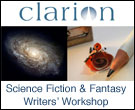



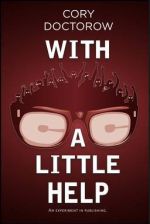
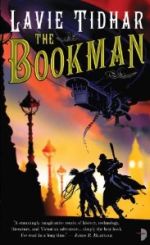
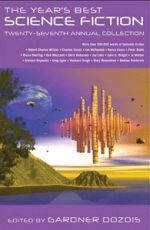
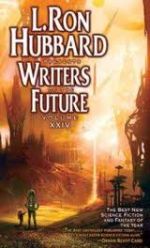
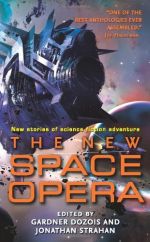
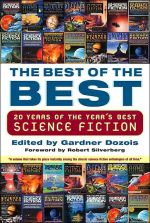
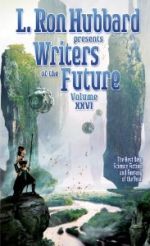
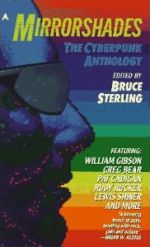
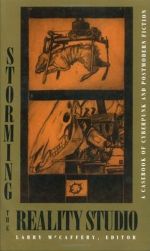
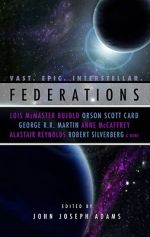
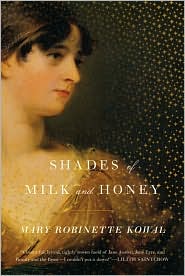

1 comment
[…] Barsoom Busted? The Foibles of Following Fiction with Film by Henry […]